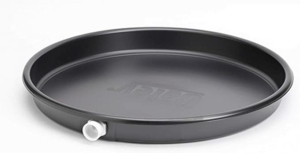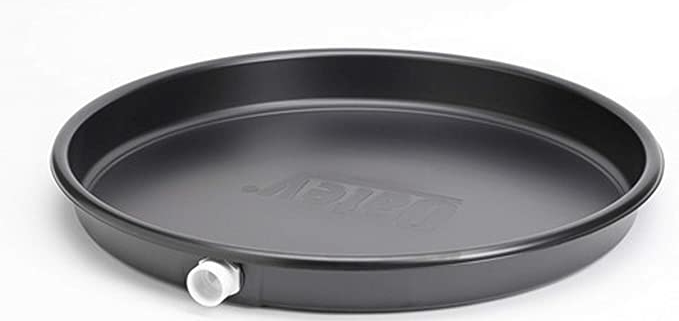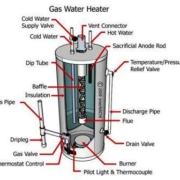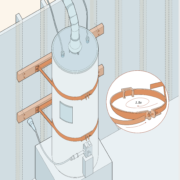Water Heater Drain Pan
A water heater tank should be installed inside a water heater drain pan in a dwelling where a leak from the tank could cause damage to the structure or property. The pan is intended to catch water leaks from the tank or associated connections or condensate from the tank. The pan should be made of galvanized steel or other approved material. Pre-fabricated aluminum and plastic pans are standard and widely used. Aluminum and plastic pans may not be allowed by every authority having jurisdiction (AHJ) or code official because they are not made of galvanized steel, and some tank manufacturers require a metal pan only.

Water Heater Drain Pan
A relief-valve pipe terminating into a water leak catch pan is not permitted because the pan is not an indirect waste receptor. Most pans have only a ¾-inch-diameter drain outlet, which is incapable of using gravity to drain the pressurized discharge of the relief valve at full flow.
The pan should not be less than 1-1/2 inches deep. The pan should be of sufficient size and shape to catch all dripping water or condensation leaks. The pan should be drained by an indirect waste pipe having a minimum diameter of 3/4-inch. The pan drain must not be reduced in size over its entire length because a reduction will act as a restriction and will impede the discharge.
The pan must not connect directly to the drainage system. The water heater drain pan should terminate over a suitably located indirect waste receptor or floor drain or extend to the exterior. An air gap must be provided to prevent backflow when the pan drain terminates into an indirect waste receptor or a floor drain. When the pan ceases at the exterior of the dwelling, it should terminate at least 6 inches and, at most, 24 inches above the adjacent ground surface. This makes the pan low enough not to be a nuisance and high enough to prevent the pan drain from becoming blocked by vegetation, snow, or ice.







Leave a Reply
Want to join the discussion?Feel free to contribute!